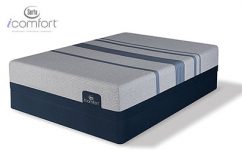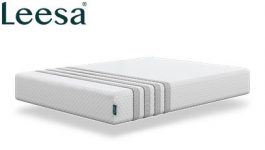Back sleepers benefit from snoozing in a position that keeps the spine relatively neutral. The right bed can reinforce this healthy posture, ensuring that you sleep soundly and comfortably.
If you’re a back sleeper, one of your chief concerns when shopping for a mattress should be support. This sleeping position tends to require a bit of firmness, and to that end, you’ll want a bed that blends coziness with a reassuring solidity. The Sleep Advisor team has rounded up our top 10 best mattresses for back sleepers with this mix in mind.
Our Top Pick for The Best Mattress for Back Sleepers:
The Helix Dusk is at the top of our list for its hybrid construction and proprietary foams, both of which create a firm yet accessible feel designed for back sleepers in particular. The comparatively low price of this bed also nets it extra points.
10 Best Mattresses for Back Sleepers
- Helix Dusk – Editor’s Pick
- Nectar – Best Memory Foam Mattress for Back Sleepers
- DreamCloud – Best Cheap Mattress for Back Sleepers
- Emma Hybrid Comfort – Best Mattress for Heavy Back Sleepers
- WinkBeds EcoCloud – Best Organic Mattress for Back Sleepers
- Saatva Classic – Best Mattress for Back Sleepers with Back Pain
- Nolah Signature – Best Cooling Mattress for Back Sleepers
- Bear Original – Best Mattress for Back Sleepers with Shoulder Pain
- Brooklyn Bedding Aurora Luxe – Best Hybrid Mattress for Back Sleepers
- Plank Firm – Best Firm Mattress for Back Sleepers
My Video Review of The Best Mattresses for Back Sleepers

Compare Mattresses for Back Sleepers
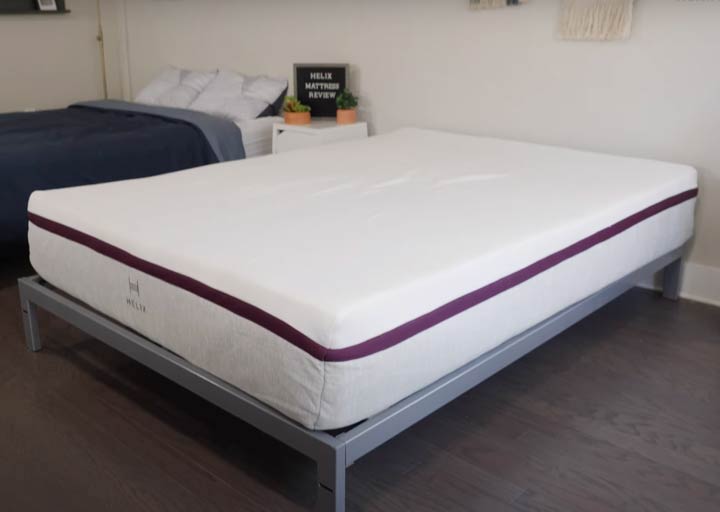
|
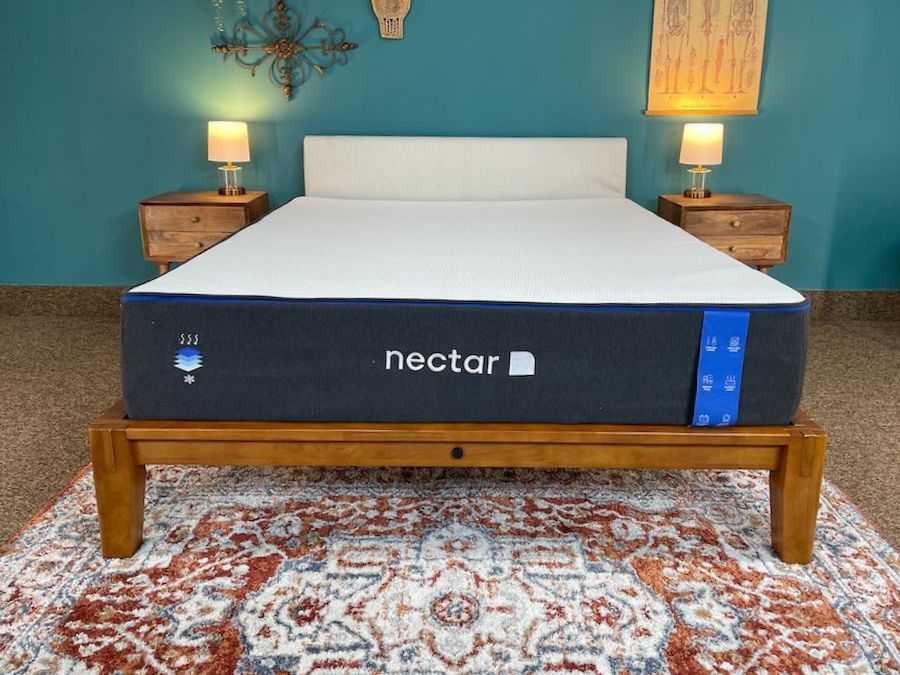
|
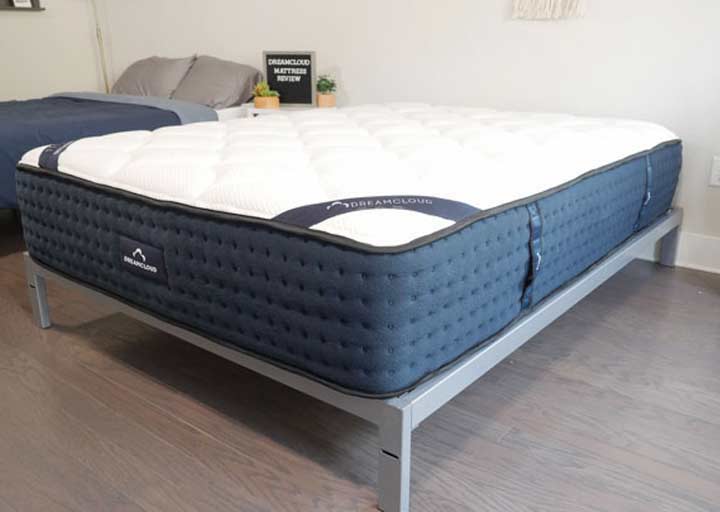
|
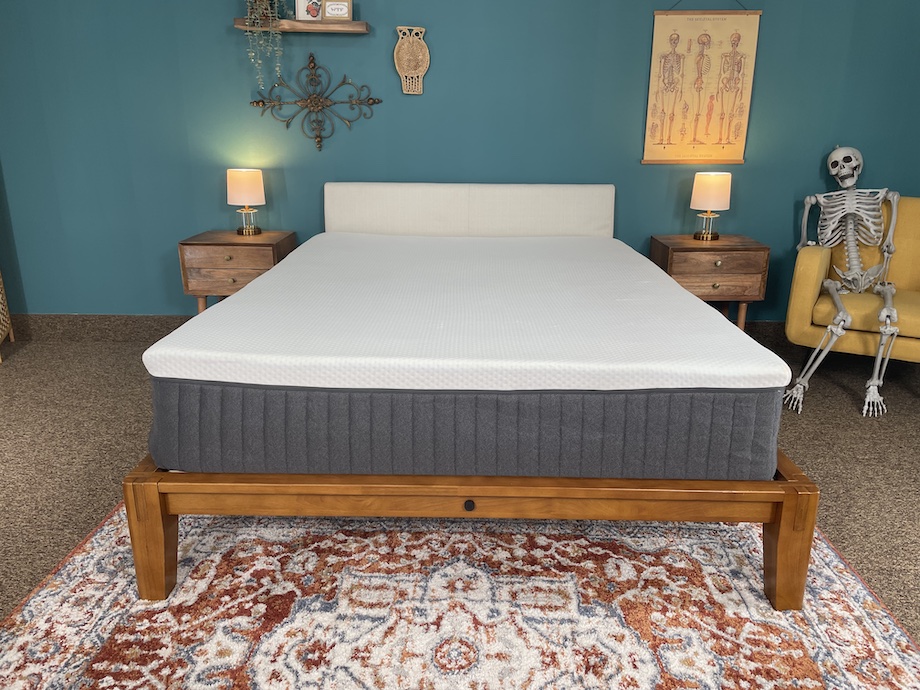
|
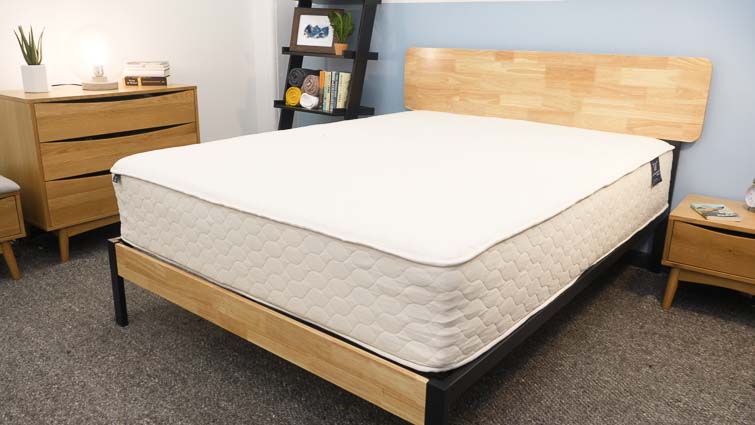
|
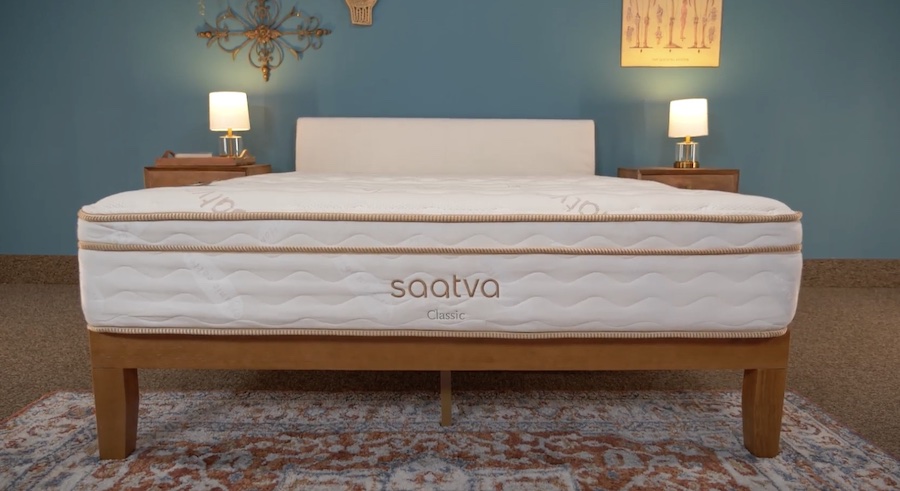
|
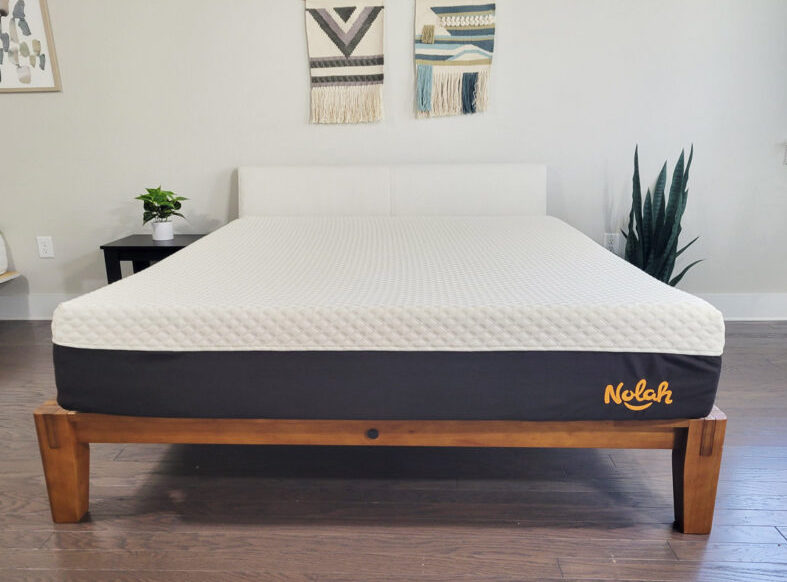
|
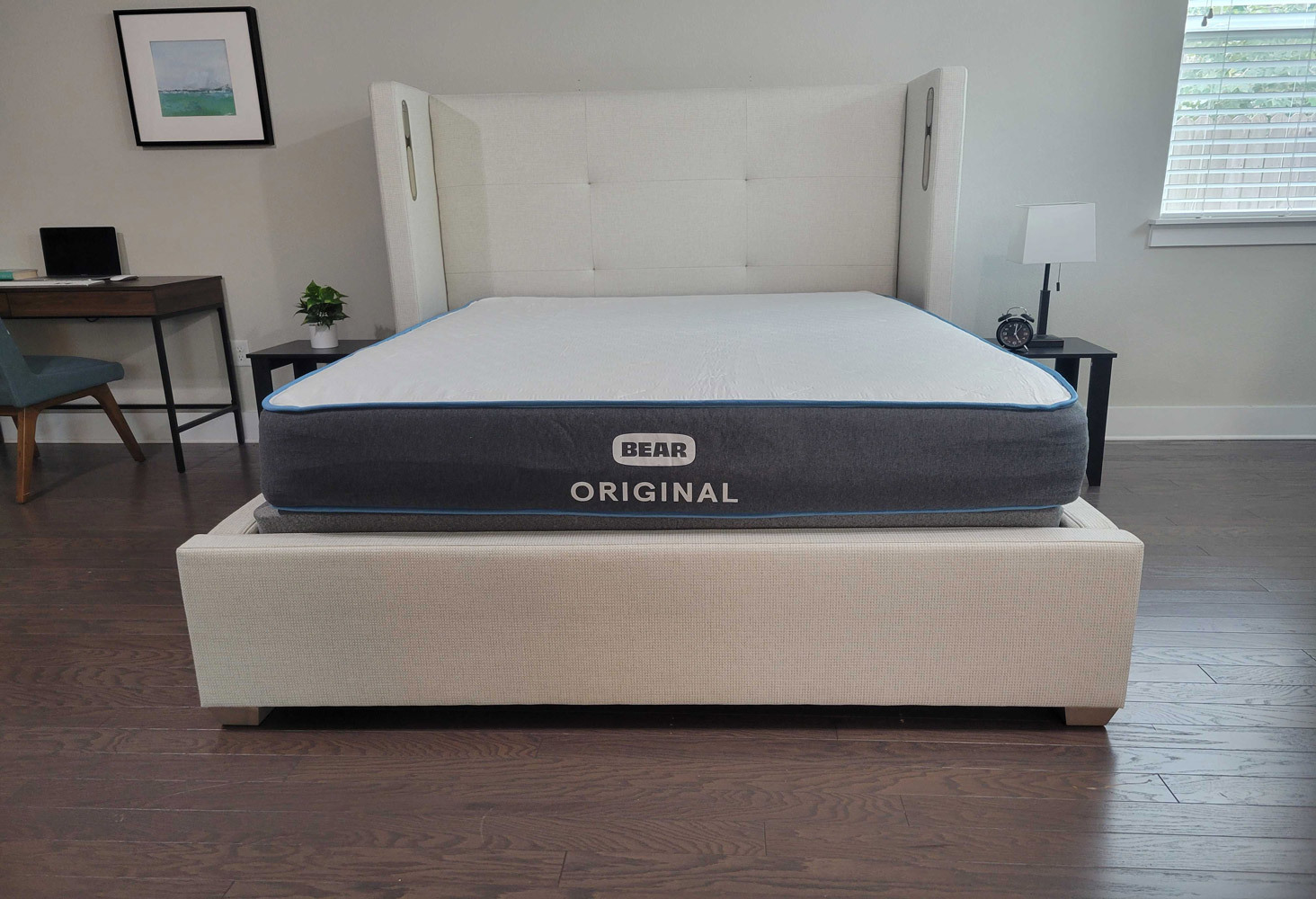
|
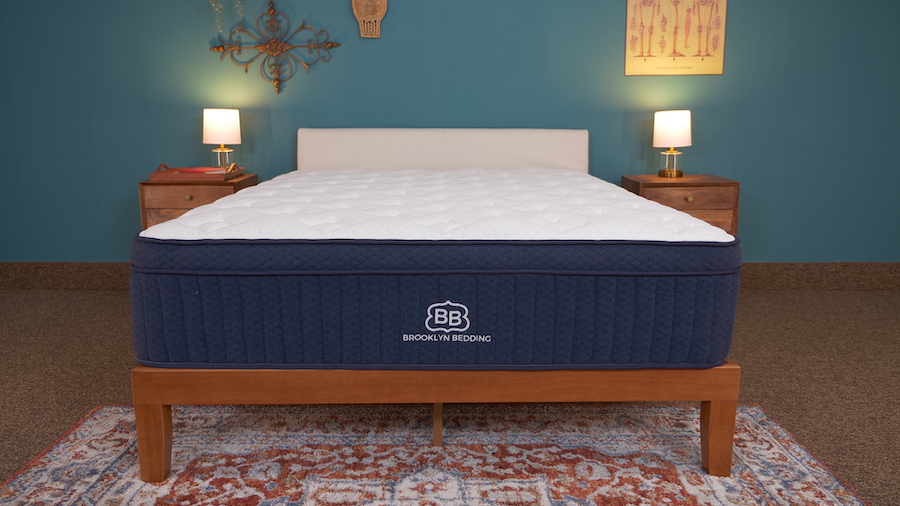
|
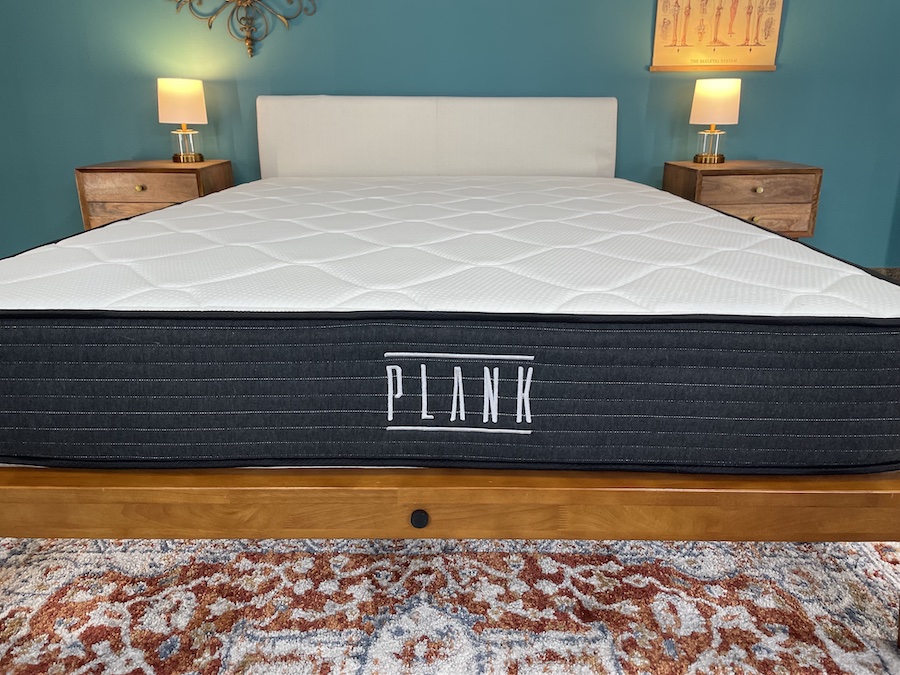
|
|
| Helix Dusk Mattress | Nectar Mattress | DreamCloud Original Mattress | Emma Hybrid Comfort | WinkBeds EcoCloud Mattress | Saatva Mattress | Nolah Signature 12″ Mattress | Bear Original Mattress | Brooklyn Bedding Aurora Luxe Mattress | Brooklyn Bedding Plank Firm Mattress | |
| Rating | ||||||||||
| Firmness | Medium-firm: 6.5/10 | Medium-firm: 6.5/10 | Firm: 7/10 | Medium: 5.5/10 | Multiple firmness options | Soft: 4/10 | Medium-firm: 6.5/10 | Multiple firmness options | Multiple firmness options | |
| Material | Hybrid | Foam | Hybrid | Hybrid | Latex | Innerspring | Foam | Foam | Hybrid | Foam |
| Cooling | — | — |
|
|
— |
|
— |
|
|
— |
| Warranty | 10-year warranty | Lifetime warranty | Lifetime warranty | 10-year warranty | Lifetime warranty | Lifetime warranty | Lifetime warranty | Lifetime warranty | 10-year warranty | 10-year warranty |
| Shipping | Free shipping | Free shipping | Free shipping | Free shipping | Free shipping | Free white glove delivery | Free shipping | Free shipping | Free shipping | Free shipping |
| Trial Period | 100 nights | 365 nights | 365 nights | 365 nights | 120 nights | 365 nights | 120 nights | 120 nights | 120 nights | 120 nights |
| Best For | Back Sleepers | Back Sleepers, Side Sleepers, Hip Pain, Joint Pain | Back Sleepers, Hot Sleepers, Seniors | Back Sleepers, Stomach Sleepers, Hot Sleepers | Back Sleepers, Side Sleepers | Back Sleepers, Stomach Sleepers, Back Pain, Hot Sleepers | Side Sleepers, Back Pain | Hot Sleepers, Back Sleepers, Side Sleepers | Hot Sleepers, Back Pain, Side Sleepers | Stomach Sleepers, Back Pain |
Sleep Advisor’s Testing Methodology
At Sleep Advisor, our mattress reviews are based on findings from in-person tests that allow us to have a genuine understanding of how the mattress feels and performs.
For this roundup, we focused on the best recommended mattresses for back sleepers based on which mattresses we deemed to have the most support features. We took several factors into account when devising our list, including spine support, different sleeping positions, pressure relief, motion isolation, firmness, couples, edge support, and more.
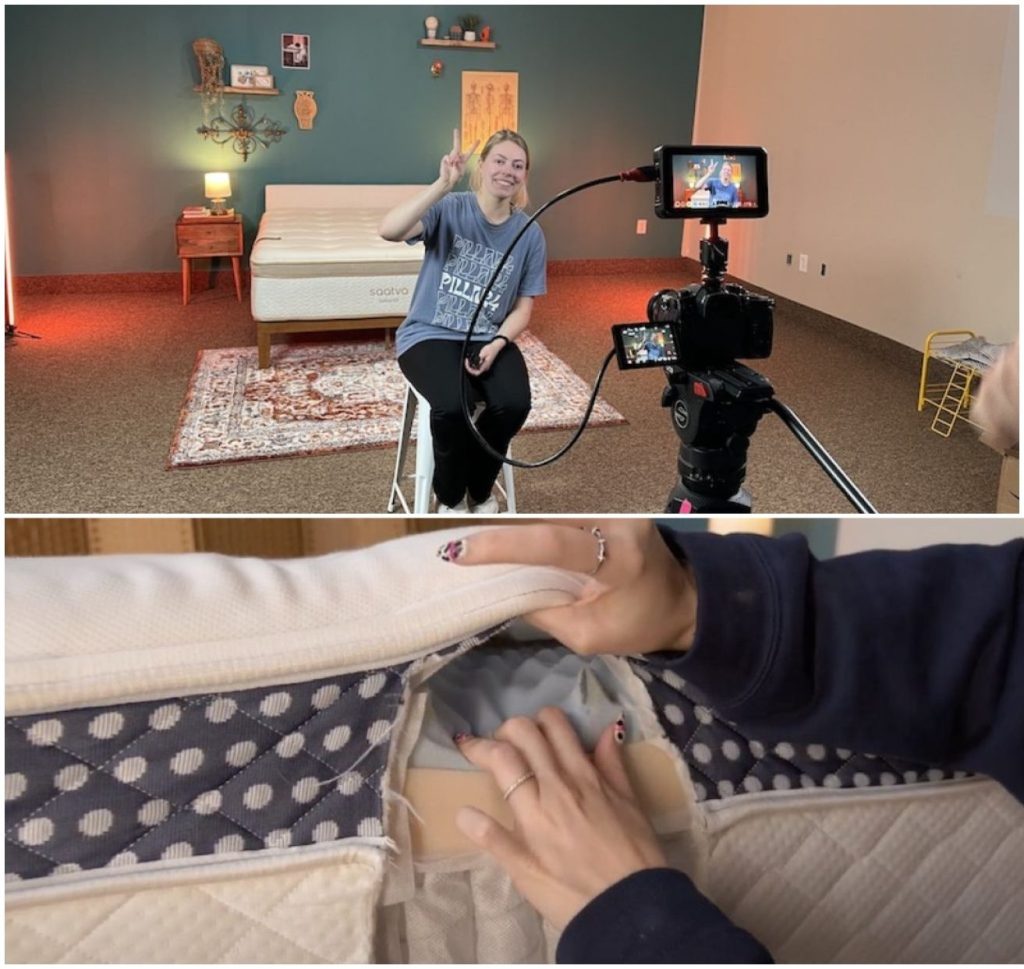
Advice from a Medical Expert
We reached out to Dr. Raj Dasgupta, who has over 20 years of experience in the medical field, to see his thoughts on what key qualities back sleepers need in a mattress.
“If you sleep on your back, look for a mattress that’s not too soft or too hard — somewhere in the middle is ideal. It should support your spine well and give some cushioning to your pressure points. Make sure it doesn’t trap heat, and if you share the bed, get one that absorbs movement.
10 Best Beds for Back Sleepers
Helix Dusk – Editor’s Pick
Helix Dusk Mattress
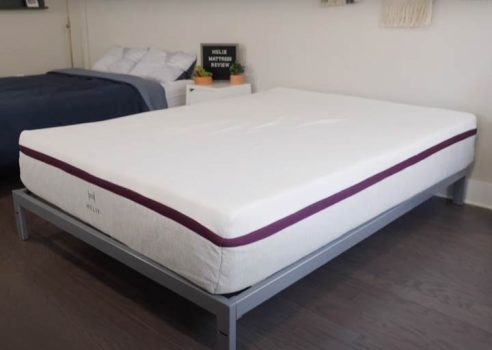
The Helix Dusk is a hybrid bed that combines foam, coils, and a cooling cover to provide an overall comfortable sleeping experience.
Material
Hybrid
Trial Period
100 nights
Shipping Method
Free shipping
Firmness
Soft: 6/10
Warranty
10-year warranty
Price Range
$$$$$
Helix Dusk Mattress

The Helix Dusk is a hybrid bed that combines foam, coils, and a cooling cover to provide an overall comfortable sleeping experience.
Material
Hybrid
Warranty
10-year warranty
Firmness
Soft: 6/10
Shipping Method
Free shipping
Trial Period
100 nights
Price Range
$$$$$

Helix Dusk Mattress
The Helix Dusk is a hybrid bed that combines foam, coils, and a cooling cover to provide an overall comfortable sleeping experience.
Material
Hybrid
Firmness
Soft: 6/10
Trial Period
100 nights
Warranty
10-year warranty
Shipping Method
Free shipping
Price Range
$$$$$
Why the Helix Dusk Earned Best Mattress for Back Sleepers Overall
If you’re a back sleeper, the Helix Dusk likely has the right combination of softness and support for a restful sleep. Its design is geared especially toward back sleepers, with materials that encourage lift and spinal alignment rather than uncomfortable sinking.
The Dusk’s layers include proprietary Helix Dynamic Foam, Helix Responsive Foam, and individually wrapped coils. Back sleepers should feel well supported by the coils while also getting a mix of pressure relief, springiness, and lift from the foams.
What’s the Helix Dusk Made Of?
The Helix Dusk is 11.5 inches thick and has five internal layers plus a top cover.
- Layer 1 – Cover. You can pick between two: the standard Soft Touch stretch cover or the cooling GlacioTex™ cover for an additional fee.
- Layer 2 – Helix Dynamic Foam. Helix’s latex-foam alternative that gives the bed some bounce.
- Layer 3 – Helix Responsive Foam. This medium-feel foam provides a comfortable cradle.
- Layer 4 – Helix Responsive Foam. A medium-firm foam that helps transition into the coil below it.
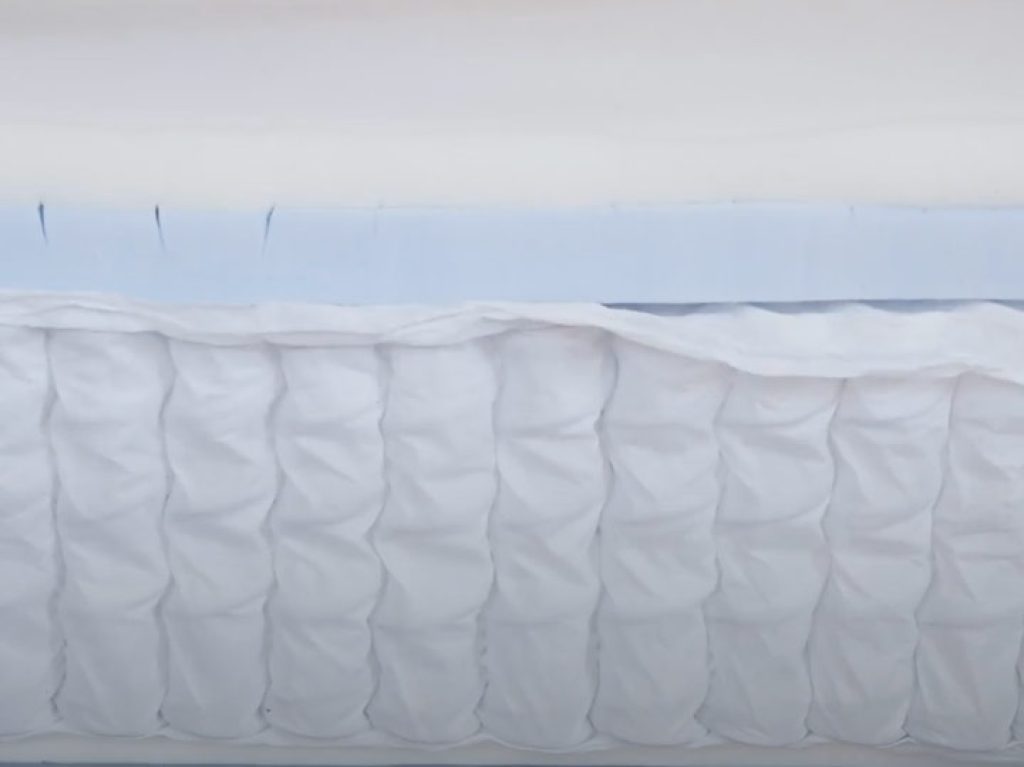
- Layer 5 – Coil Unit. Individually wrapped coils respond to your body’s position and movements. The longer sides of the mattress have reinforced springs for stronger edges.
- Layer 6 – DuraDense Foam. Everything sits on top of a sturdy foam base layer.
Our Take: The Helix Dusk is an adaptable bed that should appeal to those who sleep on their backs. Its firmer feel should ensure the mattress doesn’t buckle under your weight and keeps everything properly elevated.
What We Liked
- Proprietary foams – Helix’s branded foams are fine-tuned to play particular roles in each mattress, whether they’re upping responsiveness or cushioning sensitive areas.
- Cooling design – The coils inside the Dusk allow for cooling airflow, and if you want an even more chilled experience at the top of the bed, you can pay extra to add a GlacioTex™ Cooling Cover.
- Easier on the budget – Helix makes some of the most affordable hybrids available online, and the Dusk is no exception.
Potential Drawbacks
- Too hard for some sleepers – Lightweight people and folks who switch between their back and side may think that the Helix Dusk is too firm. If this sounds like you, consider looking at mattresses with more profound plushness in their upper layers.
- Not particularly eco-friendly – This bed doesn’t boast about any organic or natural materials as part of its marketing.
Customer Reviews of The Helix Dusk
The Helix Dusk rates 4.5 out of 5 on Helix’s website. Customers appreciate the Helix Dusk mattress for its customizable features, but some have found that the edge support could be better, affecting those who use the entire mattress surface.
Looking to learn more? Check out our Helix mattress guide or read through our roundup of the best mattresses for 2024.
Nectar – Best Memory Foam Mattress for Back Sleepers
Nectar Mattress
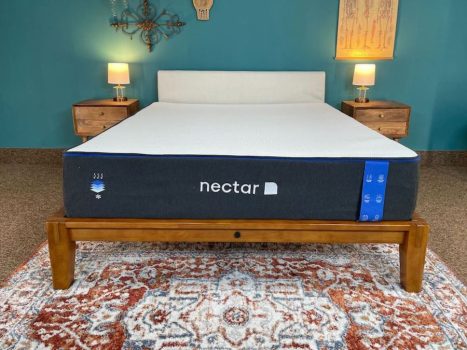
Nectar offers the deeper hug of a traditional memory foam bed but with updated cooling and a Forever warranty.
Material
Foam
Trial Period
365 nights
Shipping Method
Free shipping
Firmness
Medium-firm: 6.5/10
Warranty
Lifetime warranty
Price Range
$$$$$
We recommend this mattress for the following sleeper types:
Joint Pain
This bed is perfect for anyone suffering from joint pain.Hip Pain
This bed is perfect for anyone suffering from hip pain.Back Sleeping
Ideal for lightweight and average weight back sleepers.Side Sleeping
Ideal for lightweight and average weight side sleepers.Financing Options
Financing options are available for this mattress.
Nectar Mattress

Nectar offers the deeper hug of a traditional memory foam bed but with updated cooling and a Forever warranty.
Material
Foam
Warranty
Lifetime warranty
Firmness
Medium-firm: 6.5/10
Shipping Method
Free shipping
Trial Period
365 nights
Price Range
$$$$$
We recommend this mattress for the following sleeper types:
Joint Pain
This bed is perfect for anyone suffering from joint pain.Hip Pain
This bed is perfect for anyone suffering from hip pain.Back Sleeping
Ideal for lightweight and average weight back sleepers.Side Sleeping
Ideal for lightweight and average weight side sleepers.Financing Options
Financing options are available for this mattress.

Nectar Mattress
Nectar offers the deeper hug of a traditional memory foam bed but with updated cooling and a Forever warranty.
Material
Foam
Firmness
Medium-firm: 6.5/10
Trial Period
365 nights
Warranty
Lifetime warranty
Shipping Method
Free shipping
Price Range
$$$$$
We recommend this mattress for the following sleeper types:
Joint Pain
This bed is perfect for anyone suffering from joint pain.Hip Pain
This bed is perfect for anyone suffering from hip pain.Back Sleeping
Ideal for lightweight and average weight back sleepers.Side Sleeping
Ideal for lightweight and average weight side sleepers.Financing Options
Financing options are available for this mattress.
Why the Nectar Earned Best Memory Foam Mattress for Back Sleepers
Though back sleepers are often served best by a firmer mattress, these can create uncomfortable pressure points on certain parts of the body. Luckily, the all-over sinkage provided by the Nectar hugs your silhouette for a snug and supportive sleep. At the same time, the high-density base layer is strong and durable, lending itself nicely to spinal alignment.
Nectar offers all of the great features of a quality memory foam bed at an affordable price, and it stands out as an exceptional value.
What’s the Nectar Made Of?
The Nectar mattress is 12 inches tall and composed of five layers including a top and lower cover. It utilizes only CertiPUR-US® certified foams in its construction.
- Layer 1 – Top Cover. Polyethylene fibers give the cover a cooling feel.
- Layer 2 – Gel Memory Foam (2 inches). This foam feels cooler than traditional foam and makes for a pressure-relieving sleep surface.
- Layer 3 – Transition Layer (3 inches). A thick responsive foam acts as a supportive buffer between the plusher and firmer layers above and below it, respectively.
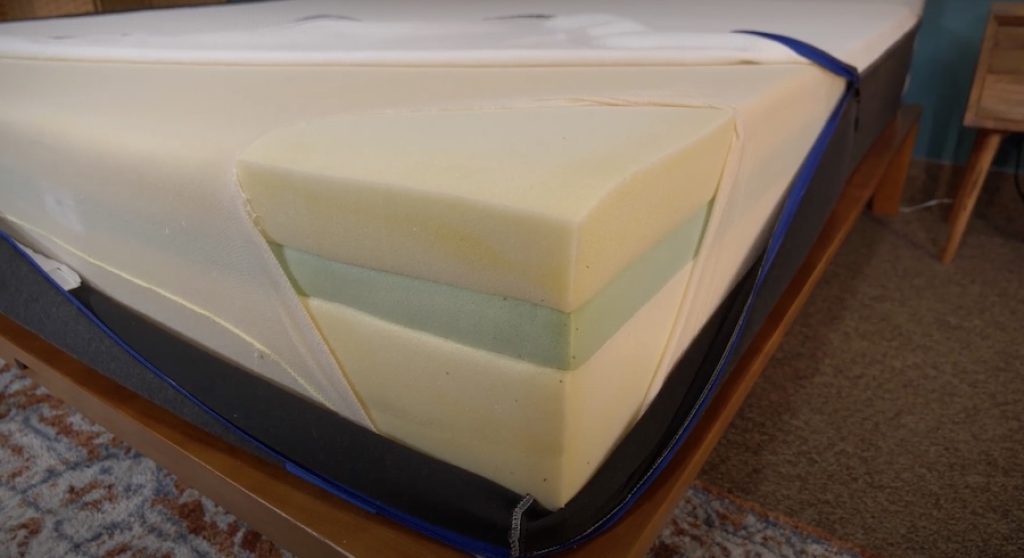
- Layer 4 – ActiveSupport Base (7 inches). The dense foundation that keeps the whole bed sturdy.
- Layer 5 – Lower Cover. This cover is stitched to ensure your mattress and everything within it stays in its proper place.
My Take: Nectar balances sink and support into the perfect profile for those who sleep on their back. In fact, most sleepers should find comfortable alignment and cradling on this bed. The price can’t be beat either!
What I Liked
- Evenly distributes weight – Nectar’s design does an excellent job of gradually increasing firmness through the three layers of foam. The heaviest parts of your body should sink into the mattress just the right amount for a uniform, supported feel.
- Super cradling – This bed has the iconic hugging feel despite its being on the firmer side. Back sleepers should enjoy the balance of support and cushion.
Potential Drawbacks
- Still not the coolest – Even though the Nectar has cooling factored into its design, it’s still a mattress made entirely of foam and therefore prone to storing heat. Hot sleepers may want to consider a hybrid, which should allow for more airflow through the bed.
- Lacking support for heavy folks – While firmer than a lot of foam mattresses, the Nectar might still feel too soft for sleepers over 200 pounds and struggle to keep them from sinking too far into its layers.
Customer Reviews of The Nectar Mattress
With thousands of reviews on Nectar’s website, the Nectar mattress has an average 4.8 out of 5 stars. One common customer complaint about the Nectar mattress is its longer-than-average break-in period, while many customers praise its excellent value and comfort once fully settled.
Want to learn more? Check out our Nectar mattress review or see our roundup of the best memory foam mattresses.
DreamCloud – Best Cheap Mattress for Back Sleepers
DreamCloud Original Mattress
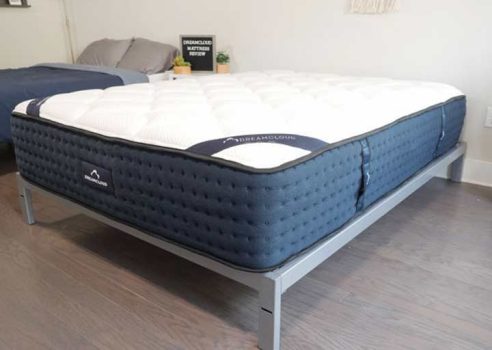
Luxurious hybrid at a great price with a lifetime warranty.
Material
Hybrid
Trial Period
365 nights
Shipping Method
Free shipping
Firmness
Medium-firm: 6.5/10
Warranty
Lifetime warranty
Price Range
$$$$$
We recommend this mattress for the following sleeper types:
Hot Sleepers
If you often overheat while you sleep, this mattress should help you stay cool.Seniors
This bed is perfect for senior sleepers.Back Sleeping
Ideal for average weight back sleepers.Financing Options
Financing options are available for this mattress.
DreamCloud Original Mattress

Luxurious hybrid at a great price with a lifetime warranty.
Material
Hybrid
Warranty
Lifetime warranty
Firmness
Medium-firm: 6.5/10
Shipping Method
Free shipping
Trial Period
365 nights
Price Range
$$$$$
We recommend this mattress for the following sleeper types:
Hot Sleepers
If you often overheat while you sleep, this mattress should help you stay cool.Seniors
This bed is perfect for senior sleepers.Back Sleeping
Ideal for average weight back sleepers.Financing Options
Financing options are available for this mattress.

DreamCloud Original Mattress
Luxurious hybrid at a great price with a lifetime warranty.
Material
Hybrid
Firmness
Medium-firm: 6.5/10
Trial Period
365 nights
Warranty
Lifetime warranty
Shipping Method
Free shipping
Price Range
$$$$$
We recommend this mattress for the following sleeper types:
Hot Sleepers
If you often overheat while you sleep, this mattress should help you stay cool.Seniors
This bed is perfect for senior sleepers.Back Sleeping
Ideal for average weight back sleepers.Financing Options
Financing options are available for this mattress.
Why the DreamCloud Earned Best Cheap Mattress for Back Sleepers
Although the DreamCloud Hybrid’s price is lower than that of many other mattresses on this list, it by no means lacks the crucial support that back sleepers crave.
Starting at the top of the mattress is the cashmere-blend cover, which gives this bed a luxurious touch. Poly foam is quilted into the cover for a plush surface, followed by gel-infused memory foam to relieve pressure, while the coils in the innerspring unit give the bed its lifted feeling. All these components make it an ideal choice for back sleepers looking for luxury on a budget.
What’s the DreamCloud Made Of?
The DreamCloud is 14 inches tall with seven layers including a top and bottom cover. The foams in the mattress are all CertiPUR-US® certified.
- Layer 1 – Top Cover. A luxurious sleep surface made of a cashmere blend that’s woven to last.
- Layer 2 – Soft Foam (1.5 inches). A plush foam layer that provides cushioning.
- Layer 3 – Gel-Infused Memory Foam (1 inch). This layer relieves pressure and contours to your body.
- Layer 4 – Transition Layer (2 inches). Standard foam acts as a buffer between the comfort layers and the innerspring layer.
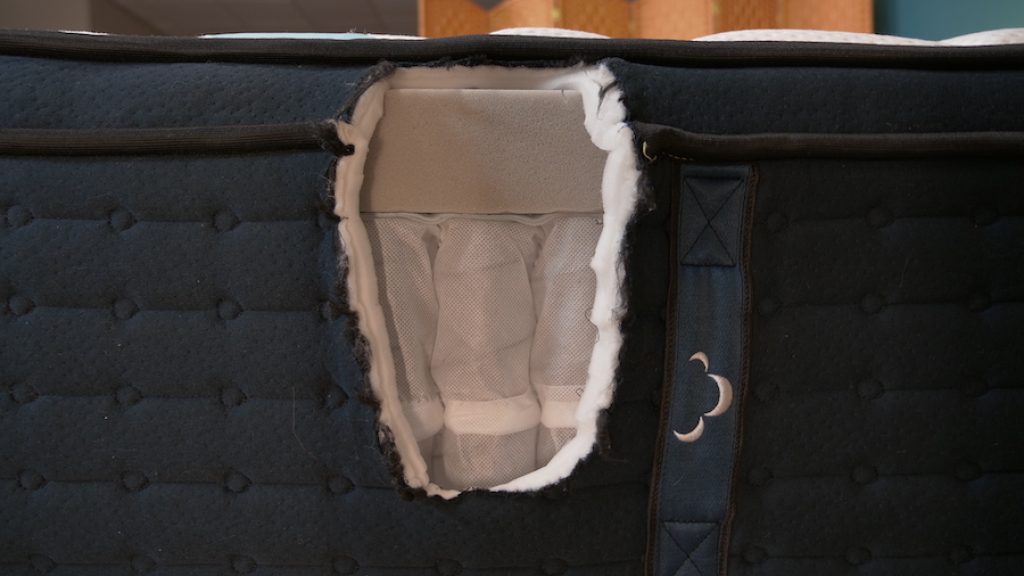
- Layer 5 – Coil Unit (8.5 inches). Individually wrapped coils allow for airflow and motion isolation while reinforcing the edges.
- Layer 6 – Base Layer (1 inch). Another layer of standard foam makes up the foundation of the bed.
- Layer 7 – Lower Cover. An anti-shift cover that also has handles to aid in transportation.
My Take: I tested the DreamCloud in all positions, and it maintained support in each. So back sleepers should rest easy knowing they’ll stay lifted and aligned—all of this with luxurious features and reasonable pricing.
What I Liked
- Generous policy – DreamCloud offers one of the best trial and warranty deals around; Customers get 365 nights to try out the bed and a forever warranty.
- Lifting – Most people are going to feel boosted on top of this mattress. It keeps you elevated not just on your back, but also your stomach. (Trust me; I’m a stomach sleeper myself.)
Potential Drawbacks
- Not for foam purists – The DreamCloud has a distinctly hybrid feel with lots of sturdy support. If you want to be hugged by your mattress, steer clear and consider an all-foam option from this list.
- Weaker edges – Though the perimeter of the mattress has reinforcement built in, I still found that the edges buckled a bit when sitting on them.
Customer Reviews of The DreamCloud
The DreamCloud Original scores a solid 4.7 out of 5 stars among customers on its site. One potential downside of the DreamCloud Original mattress is its weight, making it challenging to move or rotate, but it offers excellent support and comfort for those who prefer a medium-firm feel.
Want to learn more? Check out our DreamCloud mattress review, or see our roundup of the best cheap mattresses.
Emma Hybrid Comfort – Best Mattress for Heavy Back Sleepers
Emma Hybrid Comfort
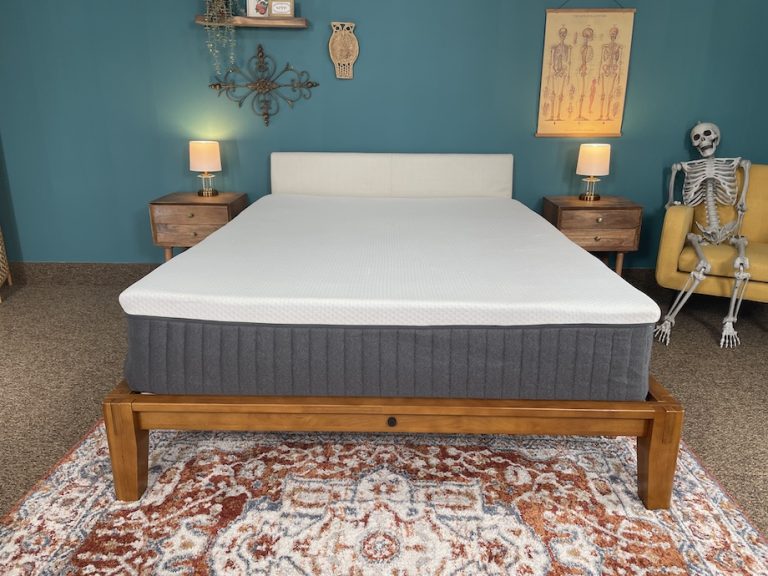
With three foam layers for comfort and a zoned innerspring unit, this hybrid mattress from Emma can support sleepers of all shapes and sizes.
Material
Hybrid
Trial Period
365 nights
Shipping Method
Free shipping
Firmness
Firm: 7/10
Warranty
10-year warranty
Price Range
$$$$$
We recommend this mattress for the following sleeper types:
Hot Sleepers
If you often overheat while you sleep, this mattress should help you stay cool.Back Sleeping
Ideal for average weight and heavyweight back sleepers.Stomach Sleeping
Ideal for lightweight and heavyweight stomach sleepers.Financing Options
Financing options are available for this mattress.
Emma Hybrid Comfort

With three foam layers for comfort and a zoned innerspring unit, this hybrid mattress from Emma can support sleepers of all shapes and sizes.
Material
Hybrid
Warranty
10-year warranty
Firmness
Firm: 7/10
Shipping Method
Free shipping
Trial Period
365 nights
Price Range
$$$$$
We recommend this mattress for the following sleeper types:
Hot Sleepers
If you often overheat while you sleep, this mattress should help you stay cool.Back Sleeping
Ideal for average weight and heavyweight back sleepers.Stomach Sleeping
Ideal for lightweight and heavyweight stomach sleepers.Financing Options
Financing options are available for this mattress.

Emma Hybrid Comfort
With three foam layers for comfort and a zoned innerspring unit, this hybrid mattress from Emma can support sleepers of all shapes and sizes.
Material
Hybrid
Firmness
Firm: 7/10
Trial Period
365 nights
Warranty
10-year warranty
Shipping Method
Free shipping
Price Range
$$$$$
We recommend this mattress for the following sleeper types:
Hot Sleepers
If you often overheat while you sleep, this mattress should help you stay cool.Back Sleeping
Ideal for average weight and heavyweight back sleepers.Stomach Sleeping
Ideal for lightweight and heavyweight stomach sleepers.Financing Options
Financing options are available for this mattress.
Why the Emma Hybrid Comfort Earned Best Mattress for Heavy Back Sleepers
The Emma Hybrid Comfort accomplishes a rare feat that plus-size back sleepers should appreciate: it preserves pressure-relieving abilities even though it’s a relatively firm bed. To achieve this, the hybrid’s construction has three layers of cushioning foam above a sturdy spring unit.
Our testers gave it a 7 on our firmness scale (with 10 being incredibly firm) and labeled it a good choice for larger back sleepers who require a lot of support.
What’s the Emma Hybrid Comfort Made Of?
The Emma Hybrid Comfort stands 13 inches tall. It has a total of seven layers including both its top and bottom covers.
- Layer 1 – Top Cover. Moisture-wicking and breathable for a dry, cooling, and comfy sleep surface.
- Layer 2 – Airgocell® Foam. Open-pored foam that sleeps cooler than typical memory foam.
- Layer 3 – Cool Foam. This memory foam’s pressure-relieving abilities allow for weight to feel evenly distributed across the mattress while also dampening motion transfer.
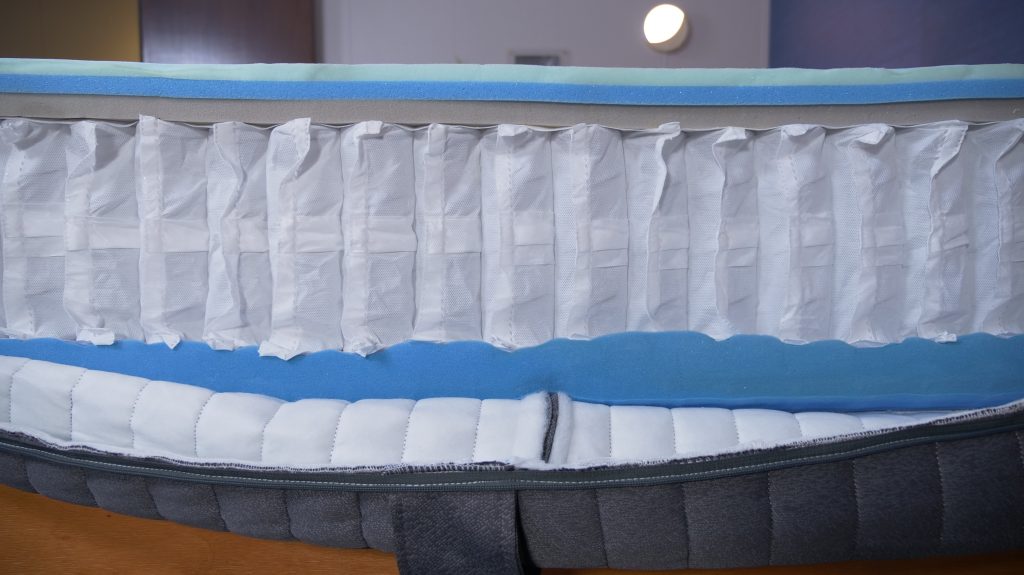
- Layer 4 – HRX Foam. High Resiliency Extra foam gives firmer support to the above layers.
- Layer 5 – Innerspring Unit. Seven unique zones of individually wrapped coils with reactive bounce-back, spaced to allow airflow.
- Layer 6 – Base. The durable foundation for the mattress.
- Layer 7 – Lower Cover. This cover has handles for easy maneuvering, along with a durable construction that seeks to prevent unwanted slipping.
My Take: Back sleepers looking for a firm feeling shouldn’t be disappointed with the Emma Hybrid Comfort. It manages to feel firm and supportive without sacrificing pressure relief around problem areas.
What I Liked
- Nice price – The Emma Hybrid Comfort is very affordable when compared to its fellow hybrids on the market.
- Breathable – The first layer of Airgocell® foam in the Emma Hybrid Comfort has air pockets within it that help with breathability, working with the moisture-wicking cover to keep sleepers cool and comfortable.
Potential Drawbacks
- Firm for lighter folks – This mattress is noticeably firm, so some lightweight back sleepers may find its surface too unyielding and thus uncomfortable.
- Makes noise – I think it’s worth mentioning that when I was moving around on this mattress, I could hear a crinkling noise that I attributed to one of the foam layers. It wasn’t anything too excessive, but if you’re sensitive to sounds when you sleep, it’s something to keep in mind.
Customer Reviews of The Emma Hybrid Comfort
This is a fairly new mattress, so Emma’s site doesn’t have many reviews yet, but early customers already rate it an impressive 5 out of 5 stars. So far customers appreciate the Emma Hybrid Comfort mattress for its excellent motion isolation, but some have reported that it may have a slight initial off-gassing odor upon unboxing.
Want more information? Check out our full review of the Emma Hybrid Comfort, or our list of the best beds for heavy people.
WinkBeds EcoCloud – Best Organic Mattress for Back Sleepers
WinkBeds EcoCloud Mattress
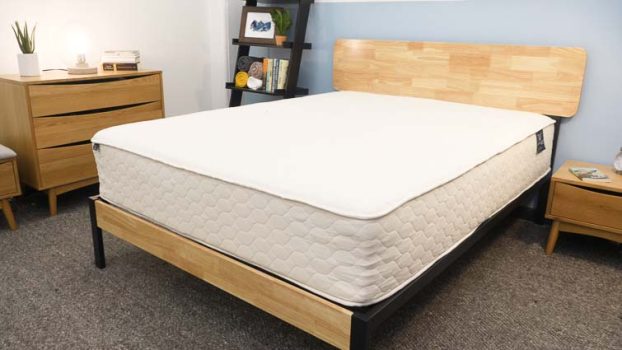
The EcoCloud by Winkbed provides a premium experience With some of the most natural materials in the bedding industry!
Material
Latex
Trial Period
120 nights
Shipping Method
Free shipping
Firmness
Medium: 5.5/10
Warranty
Lifetime warranty
Price Range
$$$$$
WinkBeds EcoCloud Mattress

The EcoCloud by Winkbed provides a premium experience With some of the most natural materials in the bedding industry!
Material
Latex
Warranty
Lifetime warranty
Firmness
Medium: 5.5/10
Shipping Method
Free shipping
Trial Period
120 nights
Price Range
$$$$$

WinkBeds EcoCloud Mattress
The EcoCloud by Winkbed provides a premium experience With some of the most natural materials in the bedding industry!
Material
Latex
Firmness
Medium: 5.5/10
Trial Period
120 nights
Warranty
Lifetime warranty
Shipping Method
Free shipping
Price Range
$$$$$
Why the WinkBeds EcoCloud Earned Best Organic Mattress for Back Sleepers
WinkBeds offers back sleepers a top-tier eco-friendly mattress with the EcoCloud. The coils in the EcoCloud are zoned for enhanced back support and promote airflow so that the sleeper stays comfortable throughout the night. Meanwhile, the Talalay latex layer delivers more support in the lumbar region and cozy cushioning elsewhere..
What’s the EcoCloud Made Of?
The EcoCloud is 12.5 inches thick.
- Layer 1 – Cover. Thanks to the mix of organic cotton and New Zealand wool, your sleep surface should feel comfortably cool.
- Layer 2 – Talalay Latex (4 inches). This layer is actually two separate breathable Talalay latex layers that are uniquely textured to support the lower back while allowing for pressure relief in the hips and shoulders.
- Layer 3 – Innerspring System (8.5 inches). Five zones of recycled, individually wrapped coils bounce back for lift across the body. More coils reinforce the perimeter for support along the sides of the mattress.
Our Take: “Lying on my back, I get this good versatile feel that a lot of back sleepers should like. The zoned latex as well helps with my alignment.” – Stuart Petty, Sleep Advisor Mattress Tester
What We Liked
- Sturdy edges – The EcoCloud is equipped with reinforced coils along the perimeter to prevent sagging if you sleep close to the bed’s edge. This feature is especially beneficial to couples since they can enjoy the entirety of the bed’s surface space.
- Reasonably priced – The EcoCloud comes in at just under $2,000 before coupons and sales, which is surprising given its sustainable and luxurious construction.
Potential Drawbacks
- Not cradling – There’s no memory foam in the EcoCloud, so if you want to feel “hugged” by your mattress, check out the beds on this list that have softer foams in their construction.
- Motion carries – Latex and coils both have a lot of bounce, which can be a problem for light sleepers who share a bed. Your partner’s movements are likely to carry over to your side of the mattress.
Looking to learn more? Check out our WinkBeds EcoCloud mattress review or consult our roundup of the best organic mattresses.
Saatva Classic – Best Mattress for Back Sleepers with Back Pain
Saatva Mattress
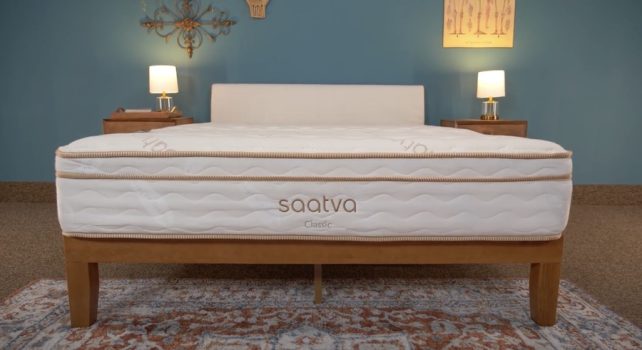
Coil-on-coil structure gives this elevated innerspring bed a luxurious feel and versatility.
Material
Innerspring
Trial Period
365 nights
Shipping Method
Free white glove delivery
Firmness
Multiple firmness options
Warranty
Lifetime warranty
Price Range
$$$$$
We recommend this mattress for the following sleeper types:
Hot Sleepers
If you often overheat while you sleep, this mattress should help you stay cool.Back Pain
This bed is perfect for anyone suffering from back pain.Back Sleeping
Ideal for lightweight, average weight, and heavyweight back sleepers.Stomach Sleeping
Ideal for lightweight and average weight stomach sleepers.Financing Options
Financing options are available for this mattress.
Saatva Mattress

Coil-on-coil structure gives this elevated innerspring bed a luxurious feel and versatility.
Material
Innerspring
Warranty
Lifetime warranty
Firmness
Multiple firmness options
Shipping Method
Free white glove delivery
Trial Period
365 nights
Price Range
$$$$$
We recommend this mattress for the following sleeper types:
Hot Sleepers
If you often overheat while you sleep, this mattress should help you stay cool.Back Pain
This bed is perfect for anyone suffering from back pain.Back Sleeping
Ideal for lightweight, average weight, and heavyweight back sleepers.Stomach Sleeping
Ideal for lightweight and average weight stomach sleepers.Financing Options
Financing options are available for this mattress.

Saatva Mattress
Coil-on-coil structure gives this elevated innerspring bed a luxurious feel and versatility.
Material
Innerspring
Firmness
Multiple firmness options
Trial Period
365 nights
Warranty
Lifetime warranty
Shipping Method
Free white glove delivery
Price Range
$$$$$
We recommend this mattress for the following sleeper types:
Hot Sleepers
If you often overheat while you sleep, this mattress should help you stay cool.Back Pain
This bed is perfect for anyone suffering from back pain.Back Sleeping
Ideal for lightweight, average weight, and heavyweight back sleepers.Stomach Sleeping
Ideal for lightweight and average weight stomach sleepers.Financing Options
Financing options are available for this mattress.
Why the Saatva Classic Earned Best Mattress for Back Sleepers with Back Pain
Although the Saatva Classic feels plush at the surface, this innerspring bed doubles up on the support—and, hopefully, back pain prevention—with two coil systems. Stacked on top of each other, these units make for an exceptional experience in spinal alignment.
Back sleepers should feel the bed’s quilted cover and lumbar-centric foam bolster their lower backs, while the first layer of pocketed coils comfortably conforms to the body. The base’s interconnected coil system also provides a strong and sag-resistant base that helps keep your back in a neutral position.
What’s the Saatva Classic Made Of?
This bed comes two different heights, 11.5 and 14.5 inches, and three different firmness levels. The Firm comfort level incorporates slightly firmer foams that offer pressure relief and additional support simultaneously. All foams used in the Saatva Classic are CertiPUR-US® certified.
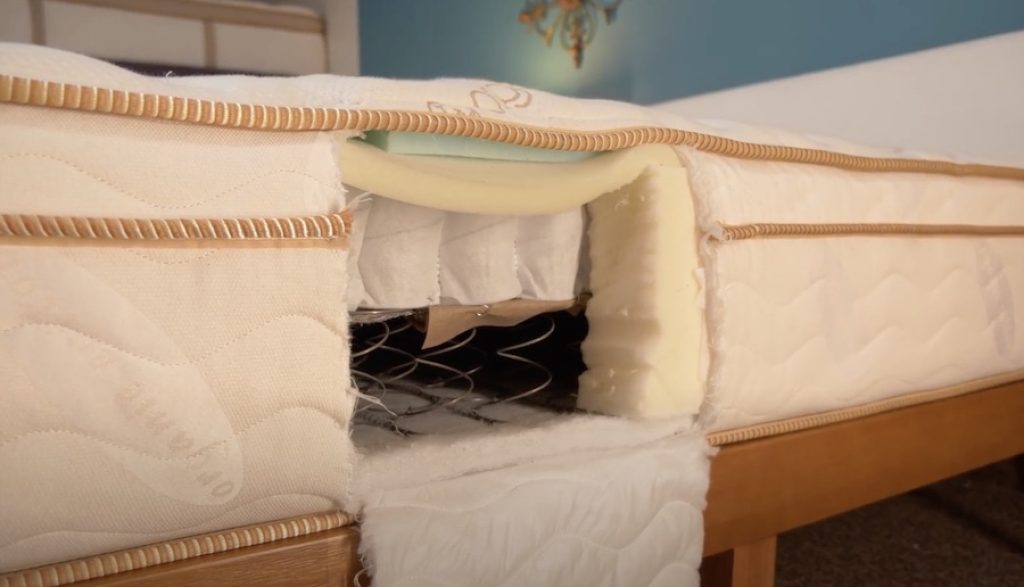
- Euro Pillow Top. A soft, cushioning sleep surface topped with organic cotton and quilted to support the lower back.
- Lumbar Crown. A memory foam insert designed to mold to the lower back for comfortability.
- First Coil Unit. Individually wrapped coils are zoned to contour precisely to your body’s shape with balanced lift and give.
- Spinal Wire. Dubbed the Lumbar Zone® Active Spinal Wire, this wire promotes proper alignment.
- Second Coil Unit. The coils are interconnected in this second unit, which adds to the durability of the mattress and mitigates sagging.
- Perimeter Foam Rails. Around the edges of the mattress are high-density foam rails for stability.
My Take: The Saatva Classic has plenty of additions to its construction that make it a dream for back sleepers. Aside from its two coil units, the model features a spinal wire to promote alignment and specialized quilting in the pillow top for superior lumbar support.
What I Liked
- Arrives decompressed – This company does not fold their mattresses into boxes, which means they can offer materials that are more compression-resistant than bed-in-a-box competitors.
- Eco-friendly efforts – Environmentally conscious shoppers can appreciate Saatva’s efforts to use sustainable materials, including bio-based oils that help create their foams, coils made from recycled steel, and an all-natural cotton cover.
Potential Drawbacks
- Returns cost extra – Saatva offers free white glove delivery, which is a plus—but when it comes to returning a mattress that didn’t work out, it’ll cost you $99.
- Could isolate motion better – The Saatva Classic is super springy thanks to its coil units, but this unfortunately means motion transfers more easily. If you sleep with a partner, expect to feel their movements from the other side of the bed.
Customer Reviews of The Saatva Classic
The Saatva Classic rates 4.8 stars out of 5 on Saatva’s website. One negative aspect customers found with the Saatva Classic mattress is that it may feel too firm for some users, while a notable advantage is its high-quality materials, providing durability and support.
Need more info? Go to our full Saatva review, or peruse our roundup of the best mattresses for back pain.
Nolah Signature – Best Cooling Mattress for Back Sleepers
Nolah Signature 12″ Mattress
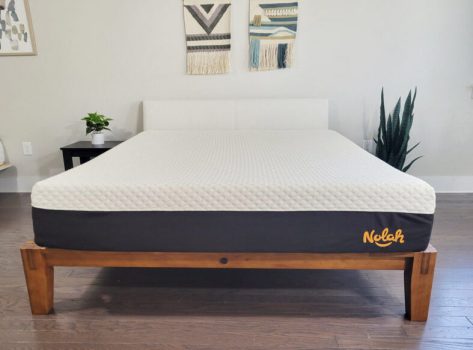
Shoppers interested in a hybrid feel should find this Signature bed a perfect choice for their needs.
Material
Foam
Trial Period
120 nights
Shipping Method
Free shipping
Firmness
Soft: 4/10
Warranty
Lifetime warranty
Price Range
$$$$$
Nolah Signature 12″ Mattress

Shoppers interested in a hybrid feel should find this Signature bed a perfect choice for their needs.
Material
Foam
Warranty
Lifetime warranty
Firmness
Soft: 4/10
Shipping Method
Free shipping
Trial Period
120 nights
Price Range
$$$$$

Nolah Signature 12″ Mattress
Shoppers interested in a hybrid feel should find this Signature bed a perfect choice for their needs.
Material
Foam
Firmness
Soft: 4/10
Trial Period
120 nights
Warranty
Lifetime warranty
Shipping Method
Free shipping
Price Range
$$$$$
Why the Nolah Signature Earned Best Cooling Mattress for Back Sleepers
Back sleepers who struggle with feeling too warm at night should enjoy the Nolah Signature and its cooling features. This memory foam mattress is 12 inches tall, featuring four foam layers, a cotton cover, and a four-way knitted border cover.
The first cooling layer is the 2.5-inch sheet of AirFoam™ under the cotton cover. Apart from cooling, this layer provides contouring pressure relief, which should also benefit back sleepers who like their spines to feel somewhat cradled by their mattress. The cooling foam adapts to your body while pulling the heat away from you and toward the bottom of the bed.
What’s the Nolah Signature Made Of?
The Nolah Signature has five layers in its 12-inch profile.
- Layer 1 – Organic Cotton Cover. This cover is naturally soft and moisture-wicking.
- Layer 2 – Nolah AirFoam™ (2.5 inches). Open-celled foam that keeps cool while contouring to the body.
- Layer 3 – Active Response Foam (1.5 inches). A breathable layer of bouncy foam for easier repositioning.
- Layer 4 – Nolah AirFoam™ (1 inch). A firmer layer of AirFoam™ that aids in pressure relief and provides support for upper layers.
- Layer 5 – Core Foundation (7 inches). High-density foam makes up the core of this mattress for overall stable and durable support.
Our Take: “If you’re interested in a hybrid feel but want an all-foam bed, you’ll love the bounce and cool nature of Nolah’s AirFoam™.” – Emma Mattei, Sleep Advisor Mattress Tester
What We Liked
- Motion dampening – The Signature is made entirely out of foam, allowing for excellent motion isolation. Couples who tend to wake one another up should appreciate the lack of disturbances while sleeping on the Nolah Signature.
- Still has lift – Despite its super-soft feel, the Nolah Signature still has plenty of sturdiness in its core to support you—especially for back sleepers who need that alignment.
Potential Drawbacks
- Edges are lacking – This bed’s all-foam construction doesn’t lend itself well to a sturdy perimeter. If you prefer to sleep or sit near the edges, be aware that the Signature will likely sink or sag.
- Too soft for some – Since the Nolah Signature is one of the softest beds on this list, heavier folks may have some difficulty feeling sufficiently supported by the foam layers.
Customer Reviews of The Nolah Signature
The Nolah Signature gets a 4.8 out of 5 stars on Nolah’s website. Customers appreciate the Nolah Signature mattress for its exceptional pressure relief, but some have mentioned that it lacks the edge support they desire.
Want to learn more? Check out our Nolah Signature mattress review or read through our roundup of the best cooling mattresses.
Bear Original – Best Mattress for Back Sleepers with Shoulder Pain
Bear Original Mattress
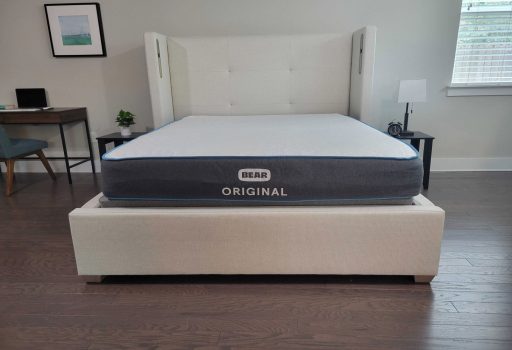
This flagship model was thoughtfully crafted and assembled to be an attractive all-foam option for athletes who need better rest.
Material
Foam
Trial Period
120 nights
Shipping Method
Free shipping
Firmness
Medium-firm: 6.5/10
Warranty
Lifetime warranty
Price Range
$$$$$
We recommend this mattress for the following sleeper types:
Hot Sleepers
If you often overheat while you sleep, this mattress should help you stay cool.Back Sleeping
Ideal for lightweight and average weight back sleepers.Side Sleeping
Ideal for lightweight and average weight side sleepers.Financing Options
Financing options are available for this mattress.
Bear Original Mattress

This flagship model was thoughtfully crafted and assembled to be an attractive all-foam option for athletes who need better rest.
Material
Foam
Warranty
Lifetime warranty
Firmness
Medium-firm: 6.5/10
Shipping Method
Free shipping
Trial Period
120 nights
Price Range
$$$$$
We recommend this mattress for the following sleeper types:
Hot Sleepers
If you often overheat while you sleep, this mattress should help you stay cool.Back Sleeping
Ideal for lightweight and average weight back sleepers.Side Sleeping
Ideal for lightweight and average weight side sleepers.Financing Options
Financing options are available for this mattress.

Bear Original Mattress
This flagship model was thoughtfully crafted and assembled to be an attractive all-foam option for athletes who need better rest.
Material
Foam
Firmness
Medium-firm: 6.5/10
Trial Period
120 nights
Warranty
Lifetime warranty
Shipping Method
Free shipping
Price Range
$$$$$
We recommend this mattress for the following sleeper types:
Hot Sleepers
If you often overheat while you sleep, this mattress should help you stay cool.Back Sleeping
Ideal for lightweight and average weight back sleepers.Side Sleeping
Ideal for lightweight and average weight side sleepers.Financing Options
Financing options are available for this mattress.
Why the Bear Original Earned Best Mattress for Back Sleepers with Shoulder Pain
If you’re a back sleeper with shoulder pain, the Bear Original may be a great fit. Though it’s an all-foam mattress, it has a medium-firm feel that should have sleepers feeling lifted rather than swallowed up by their bed.
The solidity of the Bear Original should work to keep the body aligned and the shoulders cushioned yet level, mitigating overall pain.
What’s the Bear Original Made Of?
The Bear Original has four layers (when counting its cover) and is 10 inches thick.
- Layer 1 – Cover. Choose between the standard breathable Tencel™ cover or pay to upgrade to Celliant® for potentially quicker muscle recovery.
- Layer 2 – Gel Memory Foam. With gel to draw away heat, this cooling foam promotes proper alignment of the spine.
- Layer 3 – Bear Dynamic Foam. This foam layer ensures support while allowing for just the right amount of comfortable sink.
- Layer 4 – Support Foam. A durable core of high-density foam gives the mattress its stability.
Our Take: “It’s a little firmer than the typical all-foam mattress, which should make it a little bit more versatile for different kinds of sleepers.” – Stuart, Sleep Advisor Mattress Tester
What We Liked
- Certified safe – The Bear Original is GREENGUARD Gold certified, meaning it abides by high standards for the exclusion of chemicals and pollutants.
- Upgrades – For an additional fee, you can swap the standard Tencel™ cover for one with Bear’s signature Sleep Recovery Technology™, geared toward both comfort and physical recuperation. The upgraded cover incorporates Celliant®, a type of performance fabric that aims to boost blood flow and reduce inflammation.
Potential Drawbacks
- Thinner – The Bear Original is only 10 inches tall, so it’s going to seem low to the ground without an added platform base or foundation.
- Too firm for some side sleepers – Dedicated back sleepers should rest easy on this bed, but if you also switch to your side, the firmer foams might not cradle as much as you’d like.
Customer Reviews of The Bear Original
According to Bear’s website, the Bear Original scores about 4.5 out of 5 stars. Customers appreciate the Bear Original mattress for its excellent pressure relief but have reported that its edge support may be lacking, which could affect those who use the full mattress surface.
Curious about this bed? Read our Bear Original mattress review or see our roundup of the best mattress for shoulder pain.
Brooklyn Bedding Aurora Luxe – Best Hybrid Mattress for Back Sleepers
Brooklyn Bedding Aurora Luxe Mattress
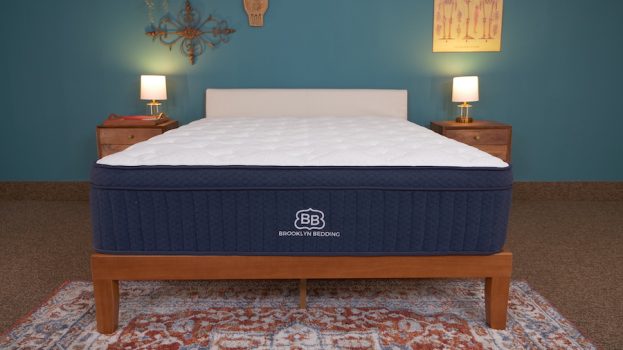
The Aurora Luxe is a cooling mattress with TitanCool™ Technology, copper and gel infusions, and a temperature-regulating coil layer working together to provide exceptional comfort for those who sleep hot.
Material
Hybrid
Trial Period
120 nights
Shipping Method
Free shipping
Firmness
Multiple firmness options
Warranty
10-year warranty
Price Range
$$$$$
We recommend this mattress for the following sleeper types:
Hot Sleepers
If you often overheat while you sleep, this mattress should help you stay cool.Back Pain
This bed is perfect for anyone suffering from back pain.Side Sleeping
Ideal for average weight side sleepers.Financing Options
Financing options are available for this mattress.
Brooklyn Bedding Aurora Luxe Mattress

The Aurora Luxe is a cooling mattress with TitanCool™ Technology, copper and gel infusions, and a temperature-regulating coil layer working together to provide exceptional comfort for those who sleep hot.
Material
Hybrid
Warranty
10-year warranty
Firmness
Multiple firmness options
Shipping Method
Free shipping
Trial Period
120 nights
Price Range
$$$$$
We recommend this mattress for the following sleeper types:
Hot Sleepers
If you often overheat while you sleep, this mattress should help you stay cool.Back Pain
This bed is perfect for anyone suffering from back pain.Side Sleeping
Ideal for average weight side sleepers.Financing Options
Financing options are available for this mattress.

Brooklyn Bedding Aurora Luxe Mattress
The Aurora Luxe is a cooling mattress with TitanCool™ Technology, copper and gel infusions, and a temperature-regulating coil layer working together to provide exceptional comfort for those who sleep hot.
Material
Hybrid
Firmness
Multiple firmness options
Trial Period
120 nights
Warranty
10-year warranty
Shipping Method
Free shipping
Price Range
$$$$$
We recommend this mattress for the following sleeper types:
Hot Sleepers
If you often overheat while you sleep, this mattress should help you stay cool.Back Pain
This bed is perfect for anyone suffering from back pain.Side Sleeping
Ideal for average weight side sleepers.Financing Options
Financing options are available for this mattress.
Why the Brooklyn Bedding Aurora Luxe Earned Best Hybrid Mattress for Back Sleepers
The Brooklyn Bedding Aurora Luxe is a hybrid mattress that should strike a lovely balance of support and pressure relief for dedicated back sleepers. The mattress’ construction includes Brooklyn Bedding proprietary foams, memory foam, and proprietary Ascension X™ pocketed coils.
The comfort foams should give sleepers much-needed pressure relief after a long day, while the pocketed coils deliver sturdy support for optimal alignment to prevent back pain. Brooklyn Bedding offers shoppers three firmness levels to choose from, including a soft model that should benefit back sleepers who want something more plush.
What’s the Brooklyn Bedding Aurora Luxe Made Of?
The Brooklyn Bedding Aurora Luxe comes in Soft, Medium, or Firm firmnesses. It’s 13 inches tall and has six layers when you include its cover.
- Layer 1 – Cooling Cover. GlacioTex™ fibers make the cover feel cool to the touch. For an extra fee, you can add a pillow top for cushioning.
- Layer 2 – CopperFlex™ Foam (1.5 inches). Phase change material and a copper infusion allow this adaptable foam to regulate temperature and resist bacteria.
- Layer 3 – Supreme Response Comfort Foam (2 inches). The firmness of this foam layer increases along with model firmness, but all iterations have a bouncy feel. In the firm model, this layer is only 1.5 inches thick.
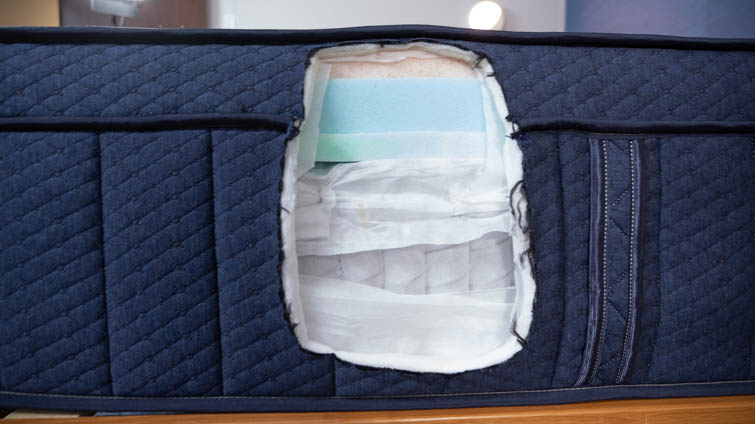
- Layer 4 – Gel Swirl Memory Foam (1 inch) or VariFlex™ Foam (1.5 inches). In the Soft and Medium versions, gel swirl foam adds pressure relief. In the Firm variant, a firmer VariFlex™ foam transitions into the coil unit.
- Layer 5 – Innerspring unit (8.5 inches). Individually encased coils are zoned for specialized support and reinforced along the perimeter.
- Layer 6 – Base (0.75 inches). A dense foam foundation rounds off the mattress.
My Take: Looking for luxury? The Brooklyn Bedding Aurora Luxe has everything a back sleeper could want: responsiveness, alignment, and pressure relief.
What I Liked
- Cooling – The Aurora Luxe is cold to the touch. My fellow tester Emma said it must be “one of the coolest sleeping mattresses that we’ve ever received.”
- Bouncy – This mattress springs back almost instantaneously when you push or sink into it. Combination sleepers and sexually active couples should appreciate this ease of movement.
Potential Drawbacks
- Feels a bit firm – I think that lightweight sleepers might not get the proper amount of sink on the Aurora Luxe and instead may find it a tad uncomfortable to lie on.
- Too cool? – Cooling is good for hot sleepers, but if you tend to sleep cold or live in a colder climate, there’s a chance the Aurora Luxe might be too cool. Emma said she was actually feeling a little chilly after lying in the bed for a bit.
Customer Reviews of The Brooklyn Bedding Aurora Luxe
On Brooklyn Bedding’s site, the Aurora Luxe has a rating of 4.7 out of 5 stars. Customers praise the Brooklyn Bedding Aurora Luxe mattress for its advanced cooling features, but some have mentioned that it is relatively expensive compared to other options.
Looking for more info? Find out more in our Brooklyn Bedding Aurora Luxe mattress review or visit our roundup of the best hybrid mattresses.
Plank Firm – Best Firm Mattress for Back Sleepers
Brooklyn Bedding Plank Firm Mattress
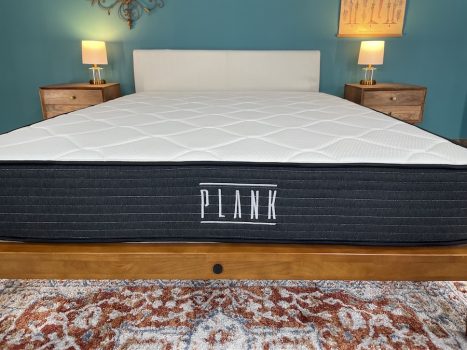
Those in the market for a Firm bed now have a dual-sided choice to see what they require to sleep well-supported and comfortable in Plank Firm, a new product from Brooklyn Bedding.
Material
Foam
Trial Period
120 nights
Shipping Method
Free shipping
Firmness
Multiple firmness options
Warranty
10-year warranty
Price Range
$$$$$
Brooklyn Bedding Plank Firm Mattress

Those in the market for a Firm bed now have a dual-sided choice to see what they require to sleep well-supported and comfortable in Plank Firm, a new product from Brooklyn Bedding.
Material
Foam
Warranty
10-year warranty
Firmness
Multiple firmness options
Shipping Method
Free shipping
Trial Period
120 nights
Price Range
$$$$$

Brooklyn Bedding Plank Firm Mattress
Those in the market for a Firm bed now have a dual-sided choice to see what they require to sleep well-supported and comfortable in Plank Firm, a new product from Brooklyn Bedding.
Material
Foam
Firmness
Multiple firmness options
Trial Period
120 nights
Warranty
10-year warranty
Shipping Method
Free shipping
Price Range
$$$$$
Why the Plank Firm Earned Best Firm Mattress for Back Sleepers
The Plank Firm has a relatively simple design and a very firm feel. However, it’s flippable, so you can switch between a standard firm and an “ultra firm” side whenever you want. Its construction consists of high-density support foams that both support and lift the spine, so back sleepers seeking a flat, bracing sleep surface should enjoy it.
What’s the Plank Firm Made Of?
The Plank Firm is 10.25 inches tall and has four layers in its flippable construction.
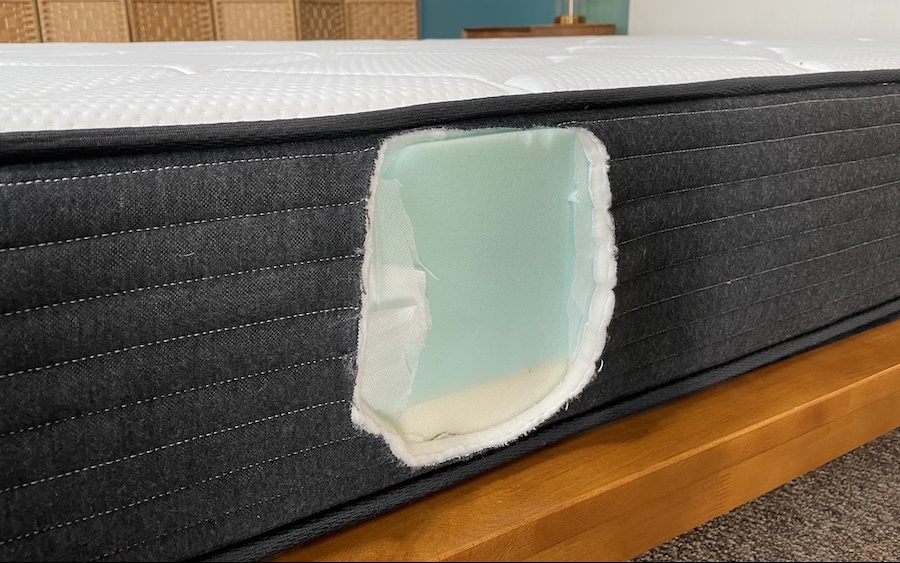
- Layer 1 – Quilted Top, Extra-Firm Side (0.75 inches). On the extra-firm side, the top layer has no loft at all.
- Layer 2 – High-Density Support Foam (6 inches). The “core” of the bed is a thick layer of high-density foam.
- Layer 3 – TitanFlex™ Comfort Foam (2 inches). This layer of foam gives the less-firm side a slight amount of bounce and contouring ability.
- Layer 4 – Quilted Top, Firm Side (1.5 inches). The standard firm side of the bed has just a bit of loft to it for a barely perceptible cushion.
My Take: The Plank Firm is much firmer than your average mattress, so you’ll need to be sure that you like a pretty unyielding sleep surface before you buy it. If you’re comfortable with its feel, you’ll benefit from steady spinal alignment.
What I Liked
- Versatile, two-sided design – The Plank has two usable sides with different firmnesses (though as I mentioned, both are plenty firm). If you’re feeling like your back could use a softer or harder bed one night, all you need to do is flip the mattress over.
- Great for stomach sleepers, too – I’m a stomach sleeper, and it can be hard for me to find a bed that gives me enough lift around my hips and lower back. The Plank elevates these areas nicely.
Potential Drawbacks
- Not much cushion at all – If you want a plush, pillowy mattress, the Plank is not for you. This bed feels … well, almost like a plank.
- Cooling costs extra – You’ll have to shell out some additional dollars if you want to outfit your Plank with a GlacioTex™ Cooling Cover on both sides. Otherwise, the foam inside it may retain more heat than you’d like.
Customer Reviews of the Plank Firm
On Plank’s website, the Plank Firm gets 4.8 out of 5 stars. Customers appreciate the mattress for its exceptional firmness, but some have found it to be too rigid for their comfort preferences.
Want to learn more? Check out our full Plank mattress review or our roundup of the best firm mattresses.
Other Mattresses We Tested for Back Sleepers
While these mattresses didn’t make our list, each of these beds are great fits for back sleepers. Check out our bonus featured recommendations below.
Product
Firmness
Trial Period
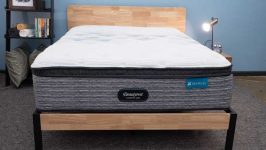
Product
Beautyrest Harmony Lux HybridFirmness
Medium: 5.5/10Trial Period
100 nights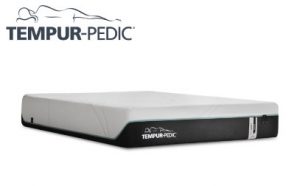
Product
TEMPUR-ProAdapt MattressFirmness
Multiple firmness optionsTrial Period
90 nightsWhat to Look for in a Mattress for Back Sleepers
Back sleepers have a natural advantage when it comes to promoting healthy spinal alignment: When you sleep on your back, your spine hews more closely to its natural curvature. Your choice of mattress can help to optimize this alignment even further, plus offer additional benefits based on your sleeping preferences.
Type of Mattress
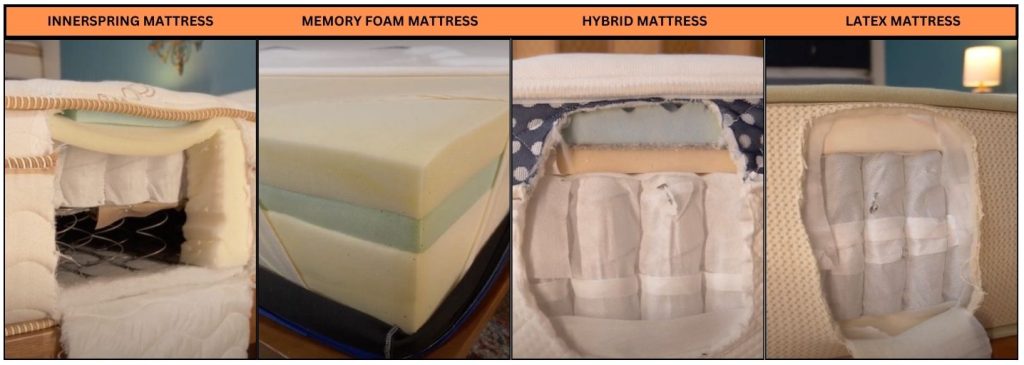
Innerspring
Innerspring mattresses are a classic option, and their robust coil units provide a good amount of support for back sleepers and stomach sleepers. If you’re considering an innerspring mattress, you’ll want to watch for sagging over time, and make sure that the bed’s upper layers compress enough underneath you to provide adequate pressure relief.
Hybrid Mattresses
Hybrid mattresses feature both springs and foams, and this combination can be a fantastic blend of support and softness for back sleepers.
Hybrids skew a bit pricier than other mattress types, and there’s a lot of variability between them, so think about what other features you value in a mattress for help in selecting your match.
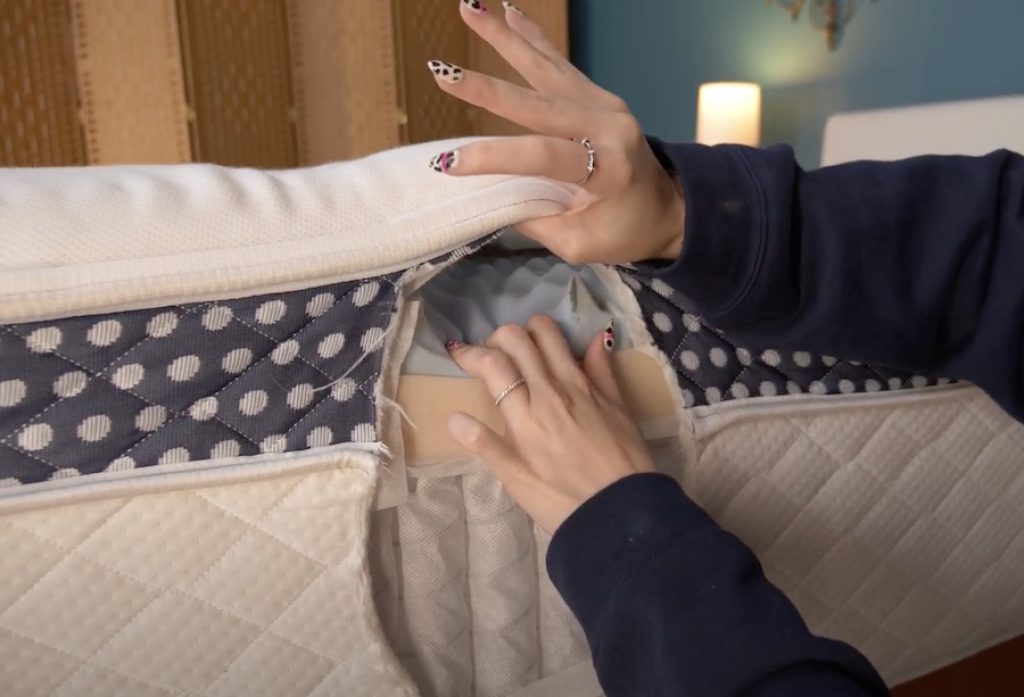
Memory Foam Mattresses
As long as they’re supportive enough, memory foam mattresses can certainly satisfy back sleepers. They’re especially good for folks who want to sink into and feel “hugged” by their bed. If you sleep on your back and you want an all-foam bed, just be sure that you’re not sacrificing support in pursuit of that immersive feel.
Latex
Utilizing the hot new material on the mattress scene, latex mattresses balance a springy feel with the pressure-relieving qualities of traditional foams. Back sleepers should enjoy the versatility of latex, its cooling properties, and the support it provides. Combination sleepers should also enjoy its level of responsiveness while shifting positions. However, latex mattresses aren’t for you if you don’t like a small bit of bounce to your bed.
Other Considerations When Shopping for a Mattress for Back Sleepers
Support
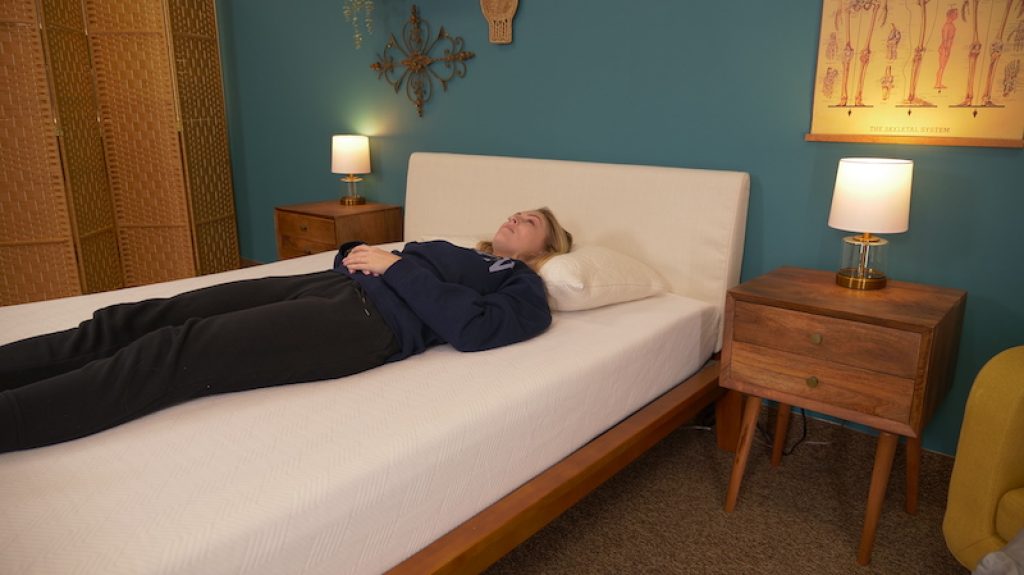
Back sleepers need a balance of pressure relief and support. They need a mattress that doesn’t allow their hips to sink too deeply but also provides enough contouring to ensure no pressure builds up in the lower back.
Coils tend to provide slightly better support than foam, but you should also aim for a contouring comfort layer that relieves pressure and tension in the lower back. Back sleepers should also pay attention to the transition layer as it can help provide some balance between the supportive base layer and the softer comfort layer.
Weight/Body Type of Sleepers
When you’re buying a new mattress, it’s always important to consider your body weight and shape. Our hips are among the heaviest parts of our bodies, so support is crucial, and if you’re a heavy sleeper weighing above 230 pounds, you need even more support from your mattress than a back sleeper weighing under 130 pounds. Additionally, there are some great beds specially designed for plus-size sleepers that can be great for achieving optimal support and comfort.
In general, we like to suggest supportive hybrid mattresses for heavyweight sleepers since the combination of coils and foam should provide a comfortable sleep space for their body type. Lightweight and average-weight sleepers should enjoy both foam and coil-based mattresses, as long quality support and pressure relief are present.
Firmness
A medium-firm mattress is typically the best fit for back sleepers. You’ll want the right amount of support to keep you elevated and preserve your spinal alignment, but enough plushness to meet your standards for comfort.
If the mattress is too soft, your lumbar (or lower back) region can lack the support it needs. You want this part of your back to feel nicely buoyed by your bed. If the mattress is too firm, then you might not be able to settle in and sleep. A rock-hard mattress can also contribute to aches and pains, which you definitely don’t want.
We recommend trying mattresses with middle-of-the-road firmness levels to see which ones you like best. There’s still a lot of wiggle room in that middle range, so back sleepers should experiment with beds that rank between a 5 and a 7 on our firmness scale.
Cooling
If you often struggle to fall asleep because you’re too hot and unable to find a cool spot on the mattress, you may need a cooling bed. Cooling mattresses have various features, such as cooling covers, gel or copper infusions, and open-cell foam. However, it’s also important to mention that some mattress types are naturally more cooling than others. For example, latex beds and hybrids are more breathable than memory foam mattresses, which tend to overheat.
For back sleeping, you should go for a mattress that allows some sinkage but doesn’t let body heat buildup around you. Sinkage is important for pressure relief, but you don’t want the material around you to trap heat, so make sure your bed has some cooling features or materials that foster breathability.
Motion Isolation
Motion isolation is important for those who share their bed with a restless sleeper, and it refers to the bed’s ability to keep movement isolated to its origin point rather than transferring to other parts of the mattress.
All-foam beds with memory foam are typically better at isolating motion. This is because the foam does an excellent job of absorbing movement. For back sleepers, memory foam can contour the lower back for excellent pressure relief while also isolating motion so you don’t feel much of your partner’s tossing and turning.
That said, if you like your bed to also have coils, we recommend getting a hybrid with memory foam and individually wrapped coils. While interconnected coils can lead to more movement traveling across the bed, individually wrapping each coil is a tactic manufacturers have started implementing to help isolate motion better.
Explore the Best Mattresses for Couples
Sex
Sexually active couples usually look for beds with some bounce, but this can come at the cost of motion isolation. For this reason, it’s important to strike a balance between the two if both of these factors are important to you.
Latex is buoyant, as are the coils in innerspring and hybrid beds. If you want a nice balance of both bounce and motion isolation, then a hybrid with memory foam could be a great option. We’ve reviewed a good number of memory foam hybrids that are responsive yet still isolate motion well.
Explore: Best Mattress for Sex
Pressure Relief
Back sleepers put the most pressure on the backs of their shoulders and hips. When you test out a mattress, pay attention to how those areas feel and how deep they’re sinking into the bed.
As always, it’s a balancing act: You want enough support to make these areas feel like they aren’t getting “lost,” and enough contouring to make them feel appropriately cradled.
Related: Best Mattress for Pressure Relief
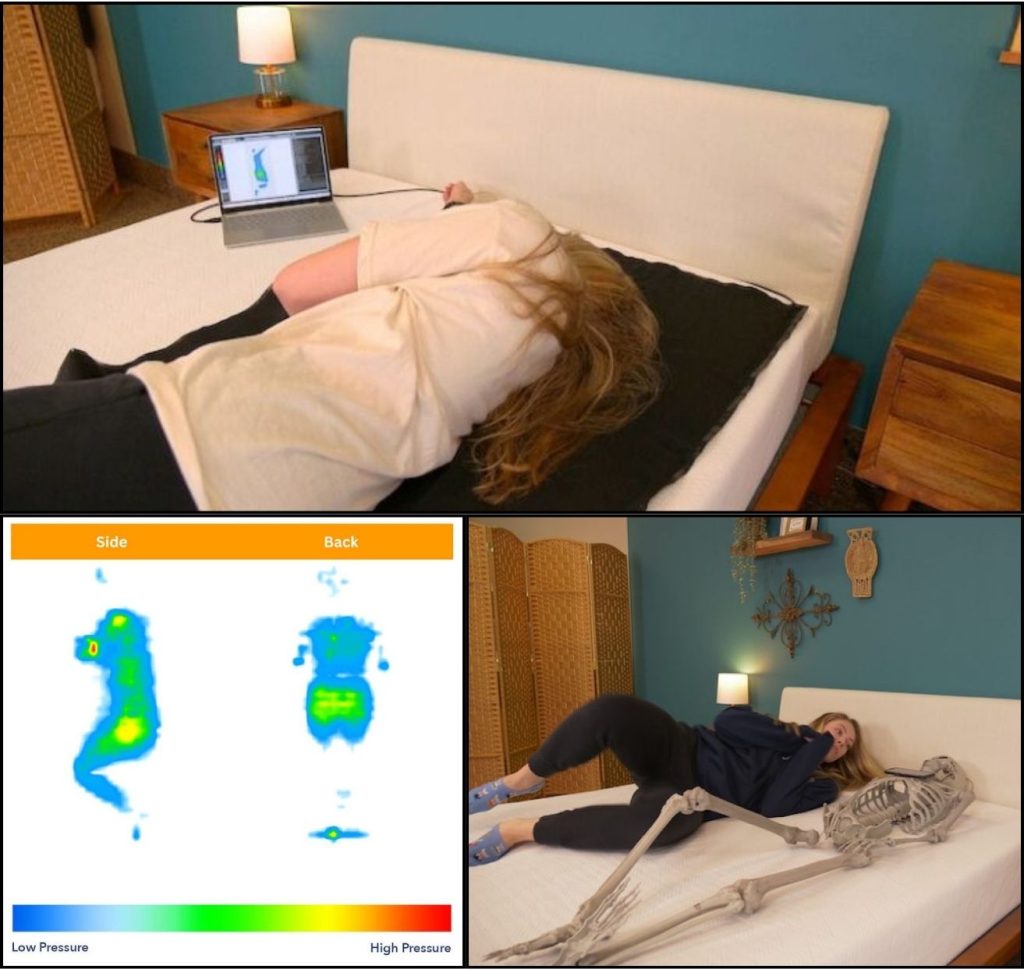
Edge Support
Back sleepers who like sleeping near the edge of the bed should look for a mattress with reinforced edges. Some mattresses have stronger coils or high-density foam around the edges to prevent them from collapsing when you sleep or sit in this area.
Although sleeping on your back often provides good weight distribution, even when you sleep near the edge, extra support is needed to prevent you from sliding off. Edge support is also valuable for couples because it gives them more usable surface space.
Budget
We suggest you think about your mattress budget before you start shopping. Having an idea of how much you’re comfortable with spending helps narrow down the options, which can make it easier to choose one mattress in less time.
Some mattresses are more expensive than others, depending on their materials and features. For example, latex and hybrid models are generally more costly than memory foam and innerspring beds, but this will depend on the particular brand. Shopping for a mattress online can save you money as well, particularly during major holiday sales.
Best Mattress for Back Sleepers FAQs
Are firm mattresses good for back sleepers?
Yes, a firm mattress can be beneficial for back sleepers as long as it isn’t so firm that it’s uncomfortable. Medium-firm mattresses tend to be the best option for people who sleep on their backs, as they offer enough pressure relief to cradle the shoulders along with the support required to promote healthy spinal alignment.
Is memory foam good for back sleepers?
Yes, memory foam can be good for back sleepers. This type of poly foam compresses underneath the body to provide a hug-like sensation and should relieve pressure around the shoulders and back.
However, you’ll want to ensure that your memory foam mattress has enough layers and built-in support as well. It’s also worth noting that memory foam is less efficient at cooling than other materials and that not everyone will enjoy its slow-moving nature.
What’s the best kind of pillow for back sleepers?
The best pillows for back sleepers will elevate the neck and head into proper alignment with the spine. Typically, this means opting for a pillow with a mid-range thickness, rather than one that’s overly flat and plush or very tall and firm.
Why is sleeping on your back good for you?
Health experts point to several reasons why back sleeping can be good for you. First, sleeping on your back can help with lower back pain1. This is the opposite of stomach sleeping, which can wind up putting extra pressure on the lower back because the midsection is more susceptible to sinking in and causing the lower back to arch.
Secondly, experts say back sleeping can help prevent wrinkles and breakouts.1 When you’re lying on your back, your face isn’t rubbing up against your pillow, reducing the chances of creases or pimples.
Does sleeping on your back cause health issues?
Although back sleeping has its benefits, certain health concerns may preclude this position from your bedtime regimen.
According to health experts, back sleeping may exacerbate neck pain, obstructive sleep apnea (OSA) symptoms, and snoring.1 The reason lying on your back can impact OSA and snoring is due to how your head, neck, and upper airway are positioned, which can obstruct the airway due to the effects of gravity on anatomical structures such as the tongue.1 In these cases, which involve OSA and snoring, consider changing your sleeping position and investigating the best mattresses for sleep apnea.
Additionally, the American Pregnancy Association2 recommends side sleeping during pregnancy, as back sleeping can cause a host of symptoms associated with your abdomen putting increased pressure on your digestive system, blood vessels (such as the inferior vena cava (IVC), which bring circulating blood back to the heart to get oxygenated), and back.
Is back sleeping healthy for everyone?
What works for some people may not work for everyone, and back sleeping is no exception. We recommend back sleeping as a baseline, but your sleeping position should be the one that works best for you, your body’s needs, and your sleep health.
Conclusion
Back sleepers are a lucky bunch. Their preferred sleeping position holds their spine in neutral alignment, or close to it, which has a host of associated benefits. But the right mattress can still make a big impact on the quality of their sleep and how nimble they feel when they wake up.
If you’re a back sleeper, hopefully, we’ve helped you narrow down your choices as you search for a new mattress. If you’re not, then perhaps you’d like to learn how to sleep on your back? As with most things in life, it just takes a bit of practice.
| Mattress | Best For | Price (Queen Size) | Review |
| Helix Dusk | Editor’s Pick | $1,199 | Full Review Coming Soon |
| Nectar | Memory Foam | $999 | Nectar Mattress Review |
| DreamCloud | Cheap | $1,332 | DreamCloud Mattress Review |
| Emma Hybrid Comfort | Heavy Back Sleepers | $1,339 | Emma Hybrid Mattress Review |
| WinkBeds EcoCloud | Organic | $1,999 | WinkBeds EcoCloud Review |
| Saatva Classic | Back Pain | $1,995 | Saatva Mattress Review |
| Nolah Signature | Cooling | $1,599 | Nolah Signature Mattress Review |
| Bear Original | Shoulder Pain | $998 | Bear Mattress Review |
| Brooklyn Bedding Aurora Luxe | Hybrid | $1,874 | Brooklyn Bedding Aurora Luxe Mattress Review |
| Plank Firm | Firm | $1,332 | Plank Firm Mattress Review |

Julia Forbes
Lead Product Tester
About Author
Julia is the Lead Reviewer at Sleep Advisor, specializing in testing out mattresses and sleep accessories – she’s in the right line of work, because she loves to sleep.
Stomach Sleeper
References:
- “Choosing the Best Sleep Position”. Johns Hopkins Medicine. Webpage accessed November 8, 2024.
- “Best Sleeping Positions During Pregnancy”. American Pregnancy Association. Webpage accessed November 8, 2024.

